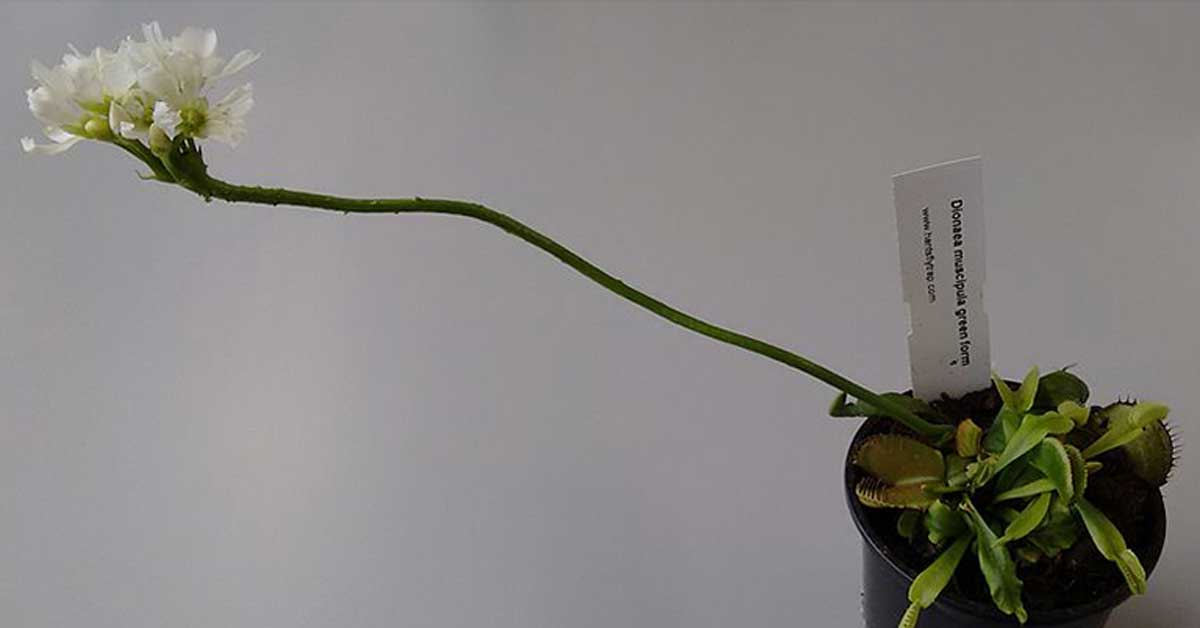If you’re a venus flytrap (Dionaea muscipula), one of your favorite things to do is to catch unsuspecting insects in your clamping, jaw-like leaf appendages. What a way to live! But like many plants, venus fly traps produce flowers that require pollinators to, well, pollinate. Without pollinators visiting venus fly trap flowers, there wouldn’t be all that many of them around today. So how do these plants get pollinated without inadvertently killing their pollinators? Nature found a workaround: tall flowers.
Why do venus fly traps catch insects?
Venus flytraps don’t “eat” insects in the same way an animal might eat something. These plants don’t consume insects for their energy and carbon. But they do capture and kill insects in order to consume a handful of vital nutrients to plants. Dionaea muscipula grows in boggy, waterlogged environments where soil nutrients, like nitrogen and phosphorus, can be quite sparse. So the Venus flytrap looks to unsuspecting insects as a source of nutrients.
The leaves of the Venus flytrap have jaw-like appendages that emit sweet-smelling nectar that attracts a variety of bugs. When an unsuspecting victim of the plant lands on the leaf edge, it clamps down, trapping the plant’s prey. From here, digestive glands secrete enzymes that break down soft tissues and absorb the nutrients provided by the prey. After about 12 days, the trap releases the remains of the bug and readies itself for another catch.
Venus flytrap flowers
The mechanism by which the Venus flytrap catches its prey is also potentially the plant’s downfall. Many pollinating insects are attracted to the sweet-smelling nectar that Dionaea muscipula produces in its mandible-like appendages. When the Venus flytrap begins to flower and produce seeds, it first sends up a very long stalk, placing its flowers well above the leaves of the plant.
Should I let my venus flytrap flower?
If you see your Venus flytrap beginning to grow a long stem different from any of its leaves, chances are, it’s getting ready to flower. But should you allow it to flower? It depends. Venus flytraps live a long time. It’s estimated that they can live for upwards of 20 years! When kept in captivity, the process of flowering can take a lot out of the plant. It can take upwards of a year for it to recover from the energy expenditure of flowering.
So the question you need to consider is: do I want Venus flytrap seeds? If the answer is yes, then allow your plant to go to flower. If you don’t intend to collect seeds and grow more plants, clip this long flowering stem as early as you possibly can – as soon as you notice it.













